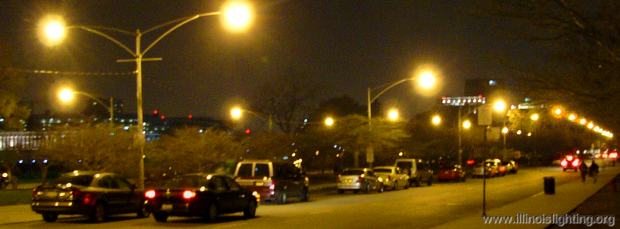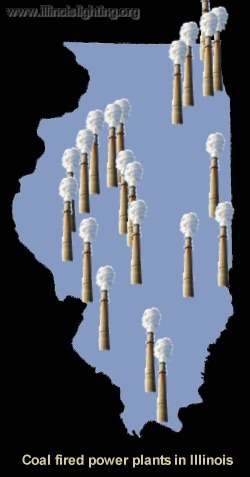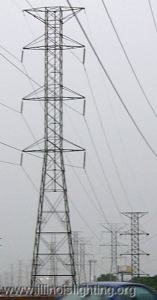| |

Conservationists know that the action which can make the largest, most immediate impact on the negative effects of our energy consumption is the reduction of the massive amount of waste in our present day-to-day use of energy. As we document on the Lighting Studies > Chicago: A Study page of this website, current outdoor lighting practices are on average very energy-inefficient. A 2008 study commissioned by the U.S. Department of Energy estimated that, in 2007, stationary outdoor lighting in our country consumed 178,300,000,000 kilowatt-hours of electricity (178 terawatt-hours) annually. Extrapolating from our Chicago figures and the current nighttime brightness of the sky over the U.S. (as shown on our Key Issues > Loss Of The Night page), we estimate that the unambiguous, outright waste of energy from irresponsible lighting in the U.S. conservatively totals in the tens of billions of kilowatt-hours annually now.

The total amount of electricity consumed by outdoor lighting is far greater yet. Besides ending the use of antiquated, energy wasting light fixtures, we need to re-analyze our whole perspective on outdoor lighting, keeping in mind the true costs of large-scale energy consumption. Those costs are not just the high utility bills which citizens, businesses and taxpayers pay, but also the steep costs which future generations will pay because of our disregard for the environment.

Our attitudes toward lighting the night have not, on average, advanced much past those of our caveman ancestors. We feel safer with the lights on, so we turn them on. The brighter, the better. If they're on when nobody is around, no big deal. But, we can do much better. We need to get it ingrained in our minds that every photon of light we create to illuminate our world represents the consumption of valuable energy resources; energy which comes ultimately at great cost, and which must not be wasted. Indeed, the biggest hurdle to overcome in ending the energy waste caused by irresponsible lighting is not one of research or engineering, but of changing the mindset of a citizenry which is used to having its nighttime world filled with glare, sadly unaware of the financial and environmental costs of that scenario. Some people are aware of the problems, and are making great strides in creating efficient, responsible lighting techniques, but unfortunately, there is a huge infrastructure of "primative" lighting in place to address, and much "old school" inertia to overcome on the road to progress.

More research needs to be done toward the goal of quantifying just how much light is needed to effectively engage in various activities. Current research is beginning to show that the color composition of artificial light seems to have a great deal of effect on our visual perception; further understanding of this will enable us to design the most energy-efficient lighting for various situations.

But we also need to re-think our concepts of turning night into day. We light for "safety", but are the lights always making us safer? This isn't that hard a question to analyze statistically, but we seldom ask it; seems that everyone feels safer with the lights on, so we don't think twice about the matter. We light so we can perform daytime activities at night, but would it be possible for us to do those activities in the daylight, and conserve a considerable amount of energy?
Research and invention will keep adding ways to increase the energy efficiency of our outdoor lighting. Coupled with a wholesale reassessment of our real lighting needs, and a progressive attitude to the subject of outdoor illumination, we can face a bright (but only bright where it needs to be) future.
|
|







